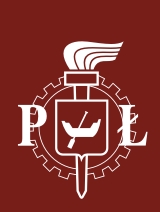
- < 1|2 >
GRANTS FROM GLOBAL ENVIRONMENT FACILITY
POLAND EFFICIENT LIGHTING PROJECT (PELP)
Poland Efficient Lighting Project (PELP) was the very first GEFs project in Poland. It was established in 1995 and it aimed at promotion of compact fluorescent lamps (CFL). The project relied on selling CPLs for significantly lowered prices and creating a schooling programme about how efficient CFLs are.
PELP provided 2,613,682$ on CFL subsidies which could be given to any CFL manufacturer who produced the lamps in Poland. They were intended to be used on decreasing the prices and increasing the availability of CFL. However, the subsidy was not shared between all the firms equally, the ones who provided more savings compared to the costs of the program were given more funds. As an effect of PELPs subsidy program 1,218,888 CFLs were sold during two seasons with an average retail price reduction at 5,91$ on each lamp. That was considered as a success.
PELP also indicated the advantages of demand side management. According to Polish Foundation of Energy Efficiency (FEWE) lighting constitutes 50% of residential peak demand in Poland. This is why PELP conceived an opportunity to help on that field also. The PELPs DSM programme was limited to three little cities due to the insufficient funds and it relied on giving the consumers number of discount coupons for CFLs. Also local civic and officials organizations were used to promote efficient lighting. During the PELPs DSM programme peak levels measured at some 0,4kV points were decreased by approximately 15% in one of the participated cities Che?mno. However high concentration of CFLs caused a 10% growth in total harmonic distortion (THD) which was inadvisable.
Another part of PELP was a luminaire subsidy programme which spent 328,540$ to promote energy efficient luminaires. It was established to educate that conventional CFLs can be even more efficient and more versatile when put in a well designed luminaire. As a part of that programme a luminaire design competition was organized in Krakow. The purpose of that event was to design a new innovative projects of luminaires and increase the awareness of CFLs and luminaires amongst the customers.
PELP also conceived a public education programme. Its task was to inform the consumers about benefits from efficient lighting. An official logo was developed and it was promoted as a way of identification of high efficient products. The logo was widely propagated on newspapers, posters and tv programmes. PELP was also very active in schools. Over 250 schools took part in the events which were aimed at promotion of energy efficient lighting.
As a general conclusion of Poland Efficient Lighting Project two tables (Table 6, Table 7) were prepared.


- < 1|2 >
-
Definition of energy conservation and demand side management|
Technologies|
Financial funds|
Legislative and normative issues|
Data base
Copyrights © Arkadiusz Mysiakowski
